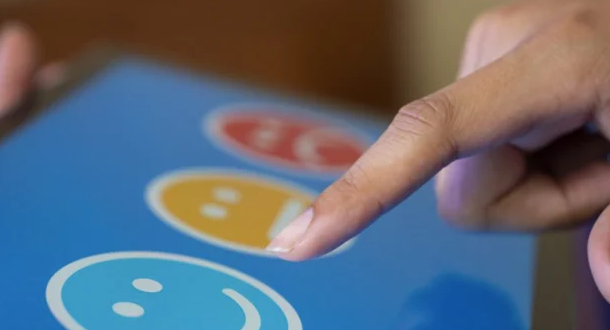The success of the Walt Disney Company seems to know no bounds. The synergy between business units like the movie productions, the theme parks, streaming service Disney+ or the cruise line creates billions in profits time and again. In this respect, the corona pandemic therefore caused a uniqueness: all twelve theme parks had to close, the four cruise ships could no longer sail, film shoots were halted and new releases were postponed because of closed cinemas. For the first time in 40 years (!), the company did not make a profit.
But despite this, construction and investment in new films, series, cruise ships, hotels and attractions continued worldwide. And also in what is perhaps the most important element: in new techniques to reach and get to know that customer better and better. What can other companies learn from Mickey Mouse?
Ralf Verhoef (45) is founder and CEO of ICT companyAngry Bytes. But he is also a big Disney enthusiast. Weekly he makes a podcast(D-Tales) with Jorn Jokker and Michiel Veenstra, about the ins and outs of Mickey Mouse's media conglomerate. He shares his lessons.
Lesson 1: Dare to invest in technical advances
'Several years ago, Walt Disney World in Florida invested inMy Disney Experience, perhaps the best example of technical advancement and data aggregation,' Verhoef explains. 'Visitors to Florida's four theme parks and two water parks - some 60 million visits a year - can put their hotel rooms, capturedfast passes (which allow you to get into attractions without waiting), dining reservations or credit cards into one account in an app. That account is linked to aMagic Band, a waterproof bracelet containing two chips that allows anonymous tracking of visitors from near and far. This allows guests to perform basic activities in the parks, such as entry, payment or identification, without the need to interact with a phone. Because you may need to be able to access that app in the parks as well, there had to be significant investment in hundreds of Wi-Fi points all over the resort, because by no means every visitor has their own data bundle. Hotel doors, payment points, attraction queues, parking entrances and park infrastructure were also addressed. A gigantic operation. You see: technical progress takes guts. And a big wallet.'
Invest in progress, but join the standard in doing so
Lesson 2: Tackle technological progress integrally.
Try to make all components and systems as compatible as possible. Technology in the 1990s was very different from today. Make the switch to the future and have the entire company move with that technology. One of the best systems to get that done isHubSpot: an industry standard that effectively helps get more website visitors, leads and customers. You can connect everything with it. Use the cloud, streamline the process, provide oversight, and for best results, use certified HubSpot experts with it. Even a global player like Disney links business units in central systems. 'Not only is the business growing, but the profile of consumers is becoming larger and more comprehensive,' Verhoef observes. 'Look at sports channel ESPN, which as we speak is linked to your Disney profile. Preferences and transactions are mapped more and more.' With Disney+, Disney's own streaming service, viewers see personally tailored offerings based on previous choices. 'From the e-mails I get through ESPN, I see that in the background they are linking things there as well,' Verhoef signals. 'That's all already there in a central backend. Transaction data, behavior, interests, Disney oversees the whole chain.'
Lesson 3: Don't give too much of your own twist to familiar concepts
It sounds contradictory: invest in novelty, but stick to the standard. Yet it is easy to explain. 'A shopping cart, for example, is generally at the top right of the screen in online stores,' Verhoef points out. 'That effectiveness has been proven and researched. You may really be the most stubborn kid in the class in some areas, but if you can develop based on standards, there is nothing wrong with that. Use the way consumers have come to think intuitively: it's OK to use the controls or layout of apps like Instagram or Facebook for that.'
Likewise, the practiced Netflix viewer will quickly be able to work his way through Disney+. It's a different product, but the search function, suggestions or options while streaming have not all been reinvented. After all, sometimes applying technology also consists of adapting the good. And that applies not only before the screens, but just as much "underwater" witha good CRM system.
Lesson 4: Always keep thinking guest-oriented, even in your technical innovation
The management book "If Disney ran your hospital: 9½ things you would do differently " is an example of the guest-centricity that is highly valued at Disney. Fred Lee, the author of this book, was senior vice president at Florida Hospital, but has also worked at Disney University. How can hospitals think more guest-oriented? Former Disney executives, such as Lee Cockerell, also travel the world conducting guest-focused training. Cockerell also has books full of tips to his credit such as "The Customer Rules" and "Creating Magic.
The Magic Band creates a personalized experience.
'Guest-friendliness is part of the Disney corporate culture,' Verhoef concludes. 'So we see that in the technical innovations: that customer experience is sacred.' He refers back again to the My Disney Experience app. 'Before your Disney trip, as a guest you record everything you want to visit in your account. That gives pre-fun, but it also gives Disney good insight into guest behavior. At what points should we provide more entertainment? Exactly how many employees are needed that day? Anything to make things run as smoothly as possible. The Magic Band provides a personalized experience in the parks. Being able to walk through quickly with a simple tap against the sensor, names of visitors appearing on themed screens in attractions. Literallya touch of magic.
Lesson 5: Make it possible to extend connected innovations
The moment you use commonly used standards or techniques (see lesson 3), you can always build on them. Even if you let others think along or co-build. Engage a specialized party that, like you, can and wants to think a few steps ahead, without removing the foundation and having to start all over again. Compare it to a hypothetical shed in the garden: always keep the possibility open for more bicycles, an extra door or perhaps a dormer window. 'We also see that long-term thinking at Disney,' laughs Verhoef. 'When new parks or hotels are built, space is kept open for expansions. At Walt Disney World, enough land was purchased in the 1960s to add parks and resorts for decades to come, and we already saw that in park resorts in Paris, Hong Kong or Shanghai, for example. Always dare to think ahead. Or, as a famous saying from The Walt Disney Company goes:if you can dream it, you can do it!'




